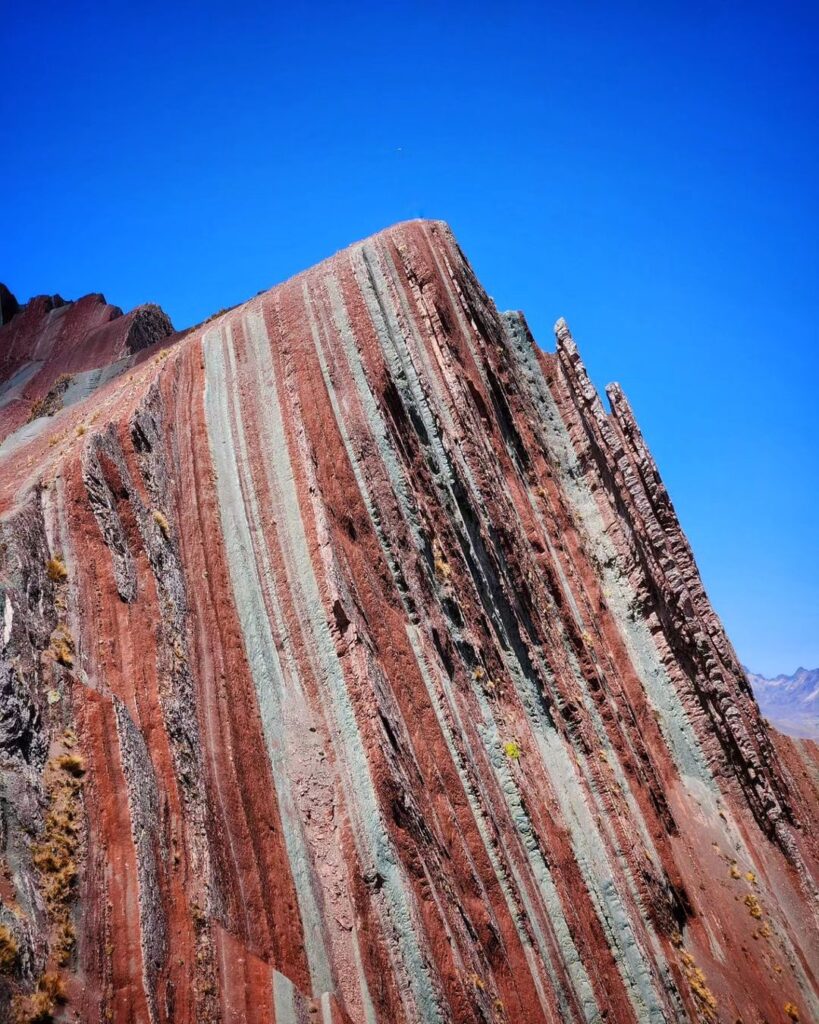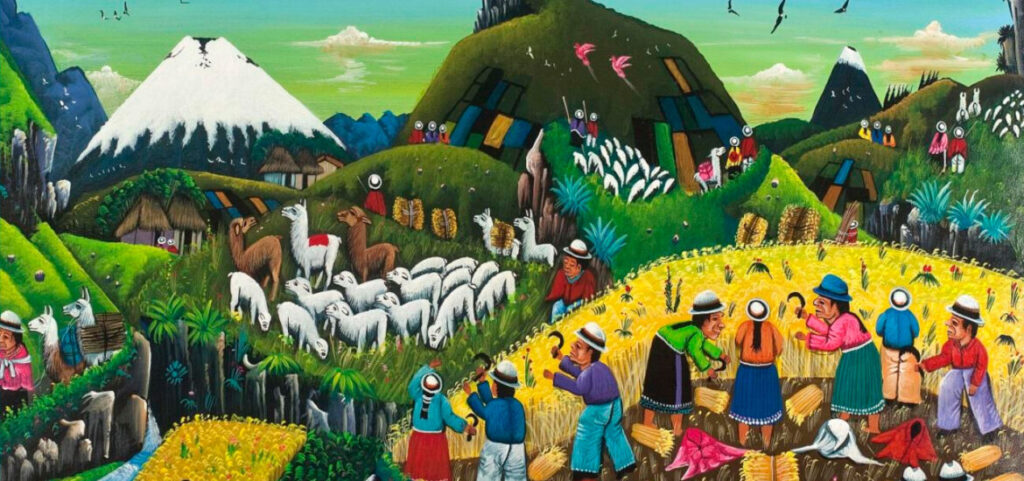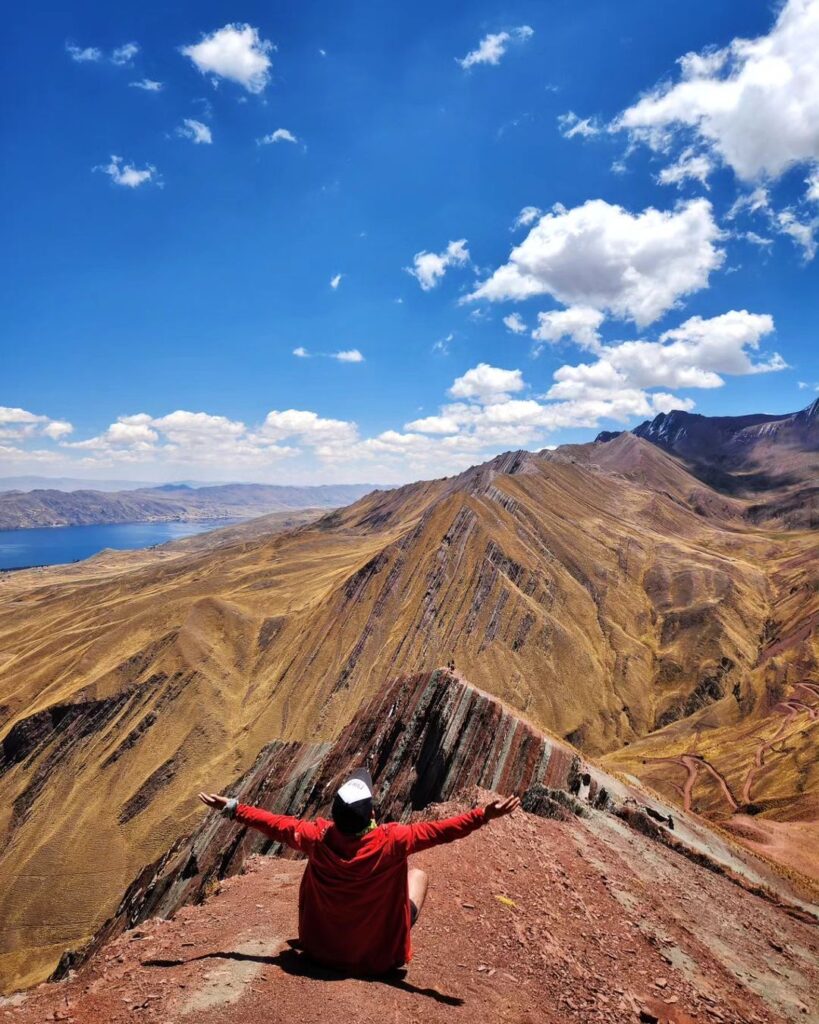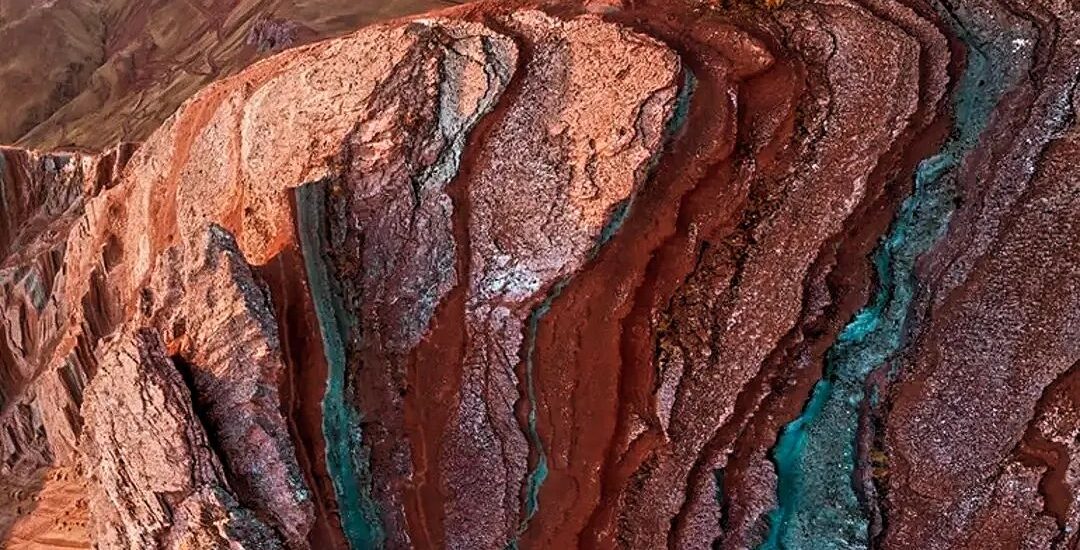Peru is well-known for its beautiful landscapes, vibrant culture, and natural beauty. One of the most noticeable Cusco attractions is the stunning Rainbow Mountain, also known as Vinicunca, which, like Palcoyo, is popular for its distinctive and fascinating coloring. However, we have to add another place in the Cusco’s Andes, Pallay Poncho.
This beautiful site near Layo village has vibrant, colorful formations and amazing views. Although it is not as popular as the other two, it’s becoming a favorite for travelers and photographers alike. Stay with us as we explore Pallay Poncho’s history, location, and cultural significance. We will also share some useful tips to help you make the most of your visit to this incredible place.
Location and How to Get There
Pallay Punchu Mountain is a beautiful destination located in the Layo district of Canas province, in the southern part of Cusco. To visit Pallay Punchu from Cusco, you must take an 189-kilometer, 4.5-hour drive. After that, you’ll have a lovely hike of around 10 kilometers to reach the site.
Sometimes called “Pallay Punchu,” this stunning site got its name because it resembles the Pallay, a traditional Andean weaving pattern, and the Poncho, a beloved Peruvian garment. Pallay Poncho has vibrant, colorful, and striped ridges, similar to the famous Rainbow Mountain.

This mountain is near the stunning Langui Lagoon, surrounded by towering, snow-capped peaks. Pallay Punchu proudly rises to an altitude of 4,700 meters above sea level. This journey offers a wonderful chance to experience the natural beauty of the region!
The Truth Behind Its Colors
The distinct colors of Pallay Poncho are the result of millennia of geological processes. These colors are mostly related to the mountain’s mineral makeup.
– Red and Orange: Result from the oxidation of iron-rich sediments.
– Yellow and Gold: Indicate the presence of sulfides or limonites.
– Green: Derives from chlorite or claystone.
– White and Gray: Come from quartz or sandstone layers.
After millions of years, tectonic activity and erosion exposed stunning, mineral-rich striped levels. The dry atmosphere here keeps the colors vibrant. They stand out against the surrounding landscapes. You might notice that the colors shift slightly with the seasons. Wet conditions can deepen the colors, but dry seasons reveal more fascinating textures.
Pallay Poncho’s Cultural and Spiritual Significance
The indigenous peoples of Layo and nearby areas highly value Pallay Poncho for its cultural and spiritual significance. They view this mountain as a sacred site that represents the strong bond between the Andean people and their natural surroundings.
In Andean cosmovision, mountains, known as Apus, are seen as protective spirits. Community members honor these Apus with offerings, rituals, and festivals, showing their gratitude for the support and sustenance they provide.

Pallay Poncho is vital to this tradition: It hosts community events and spiritual celebrations. In fact, the name Pallay is especially meaningful, as it refers to traditional Andean weaving techniques, which are essential to Quechua culture and convey stories of ancestral wisdom and harmony with nature.
By calling the mountain Pallay Poncho, the locals highlight its cultural importance and beauty. Pallay Poncho appeals to those seeking a more secluded, immersive experience, while Vinicunca is ideal for travelers with limited time.
The Pallay Poncho Journey
Pallay Poncho is a paradise for photographers and nature lovers, its angular ridges and bold colors create beautiful scenes. They are best at sunrise and sunset when the light highlights the contrasts. Drones are a great way to capture amazing aerial views of the mountains’ unique shapes. However, keep in mind that you need to respect local rules and cultural values when using these devices.
How to Get There
Reaching Pallay Poncho is an adventure in itself. The mountain is located approximately 200 kilometers (124 miles) from Cusco, the gateway to many of Peru’s iconic sites. Travelers typically take the following steps to reach the destination:
1. Travel from Cusco to Sicuani: A 3–4 hour drive along the paved Pan-American Highway.
2. Continue to Layo: A 1-hour journey from Sicuani to the town of Layo.
3. Trek to Pallay Poncho: The final leg involves a moderately challenging hike of 3–4 hours, ascending steep paths to reach the summit.
The trek demands good physical fitness due to the high altitude, which exceeds 4,700 meters (15,420 feet). Acclimatization in Cusco or other high-altitude areas is essential to avoid altitude sickness.

Best Time to Visit
The ideal time to visit Pallay Poncho is during the dry season, which runs from May to October. Clear skies and little rain in these months allow for good views and safe hiking. The rainy season (November to April) can make the trail slippery and the colors less vibrant due to cloud cover.
What to Pack
If you plan to visit Pllay Poncho, you should come prepared for high-altitude conditions. Essential items include:
– Warm, layered clothing (temperatures can drop below freezing at night).
– Sturdy hiking boots with good traction.
– Sun protection (hat, sunscreen, and sunglasses).
– Plenty of water and high-energy snacks.
– A small first-aid kit with altitude sickness medication.
Pallay Poncho vs Vinicunca
Take a look at the following chart:
| Place | Pallay Poncho | Rainbow Mountain (Vinicunca) |
| Altitude | 4,700 meters | 5,200 meters |
| Terrain | Steep, jagged ridges | Rolling, rounded hills |
| Crowds | Less crowded, quieter trails | Popular, heavily visited |
| Accessibility | More accessible even for children | Longer trek, remote location |
| Cultural Appeal | Close connection to traditions and nature | Known for its widespread fame |
| General Impressions | Ideal for a non-exhausting experience | Ideal for those seeking challenges |
Boosting Local Tourism and Economy
Pallay Poncho is becoming a popular tourist spot, bringing great economic benefits to local communities. Guided tours, transportation, and handmade artisan crafts offer new ways for the people of Layo to earn a living. Many tour operators focus on sustainability. They ensure that tourism helps the community and protects the environment.
Visitors can play a vital role in supporting the local economy by hiring local guides, buying unique handmade items, and showing respect for the area’s cultural heritage. Here are some friendly reminders for practicing responsible tourism:
- Stay on marked trails: This helps protect delicate plants and rock formations.
- Leave no trace: Make sure to take all your trash with you and avoid littering.
- Support local businesses: Choose tours run by community members and buy locally-made products.
- Respect cultural traditions: Join in local ceremonies only if invited, and follow customs.

Pallay Poncho Importance
Tourists are essential in keeping Pallay Poncho a beautiful and culturally important site for future generations. Pallay Poncho is much more than Peru’s “new Rainbow Mountain.” It shows the country’s rich geology and cultural history highlighting the close bond between its people and the land. Pallay Poncho will amaze you. We’re sure that hikers, culture lovers, and nature fans will all love it.
With care and respect, travelers can enjoy Pallay Poncho’s sights, and at the same time, also help local communities thrive. As more people discover this hidden gem, Pallay Poncho is set to become one of Peru’s most amazing attractions.
We invite you to discover more attractions and culture in Peru thanks to Viagens Machu Picchu. We’re a reputable travel agency that operates in Peru and Bolivia, our more than 100,000 satisfied clients confirm that we do our best to meet their needs. Contact us to start living your adventure in the Peruvian Andes!
Viagens Machu Picchu, journeys that inspire, moments that last.

